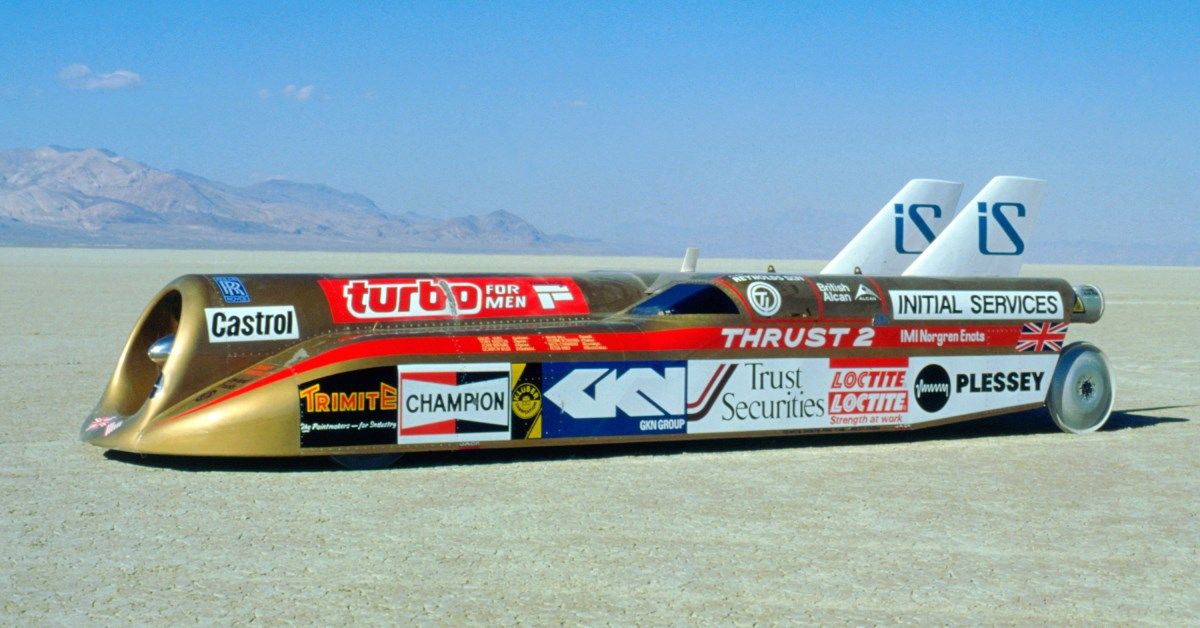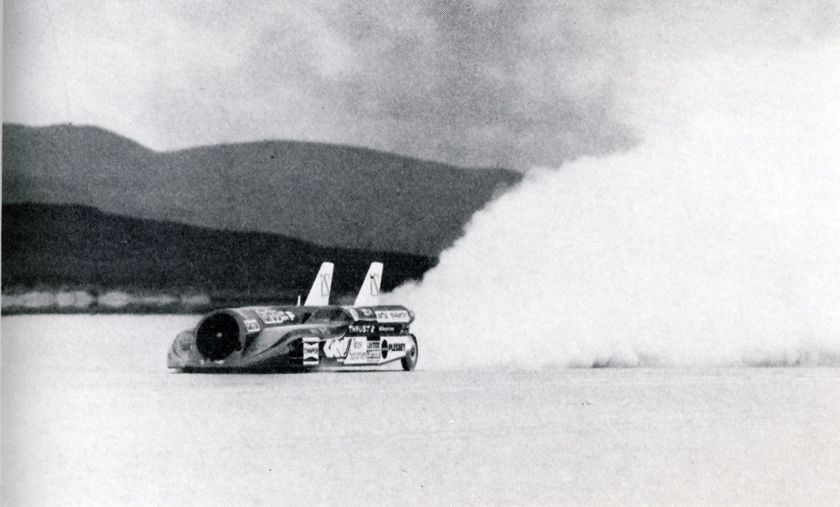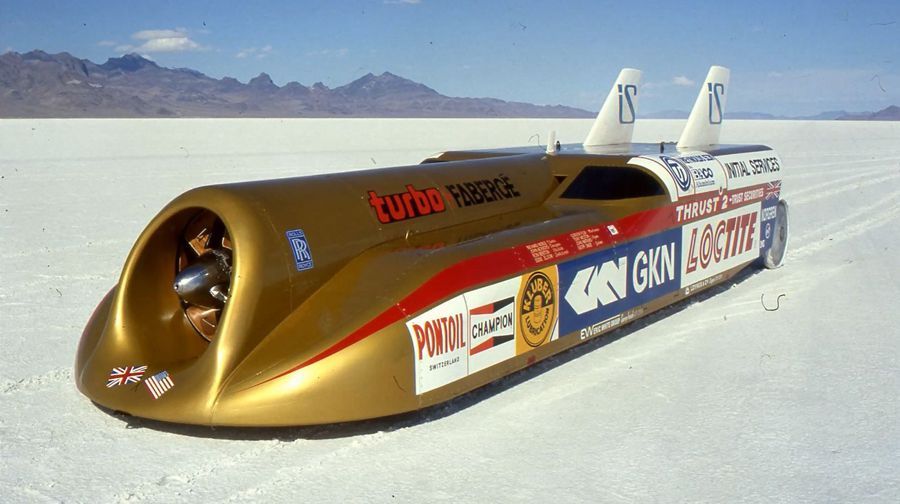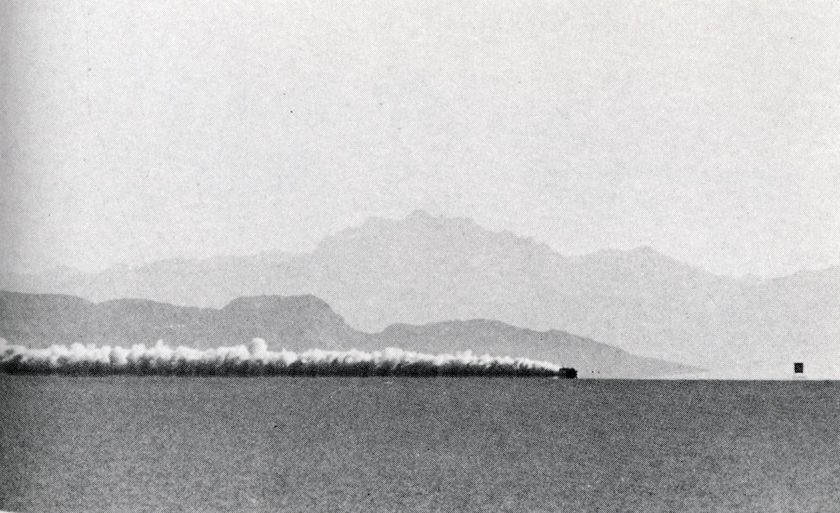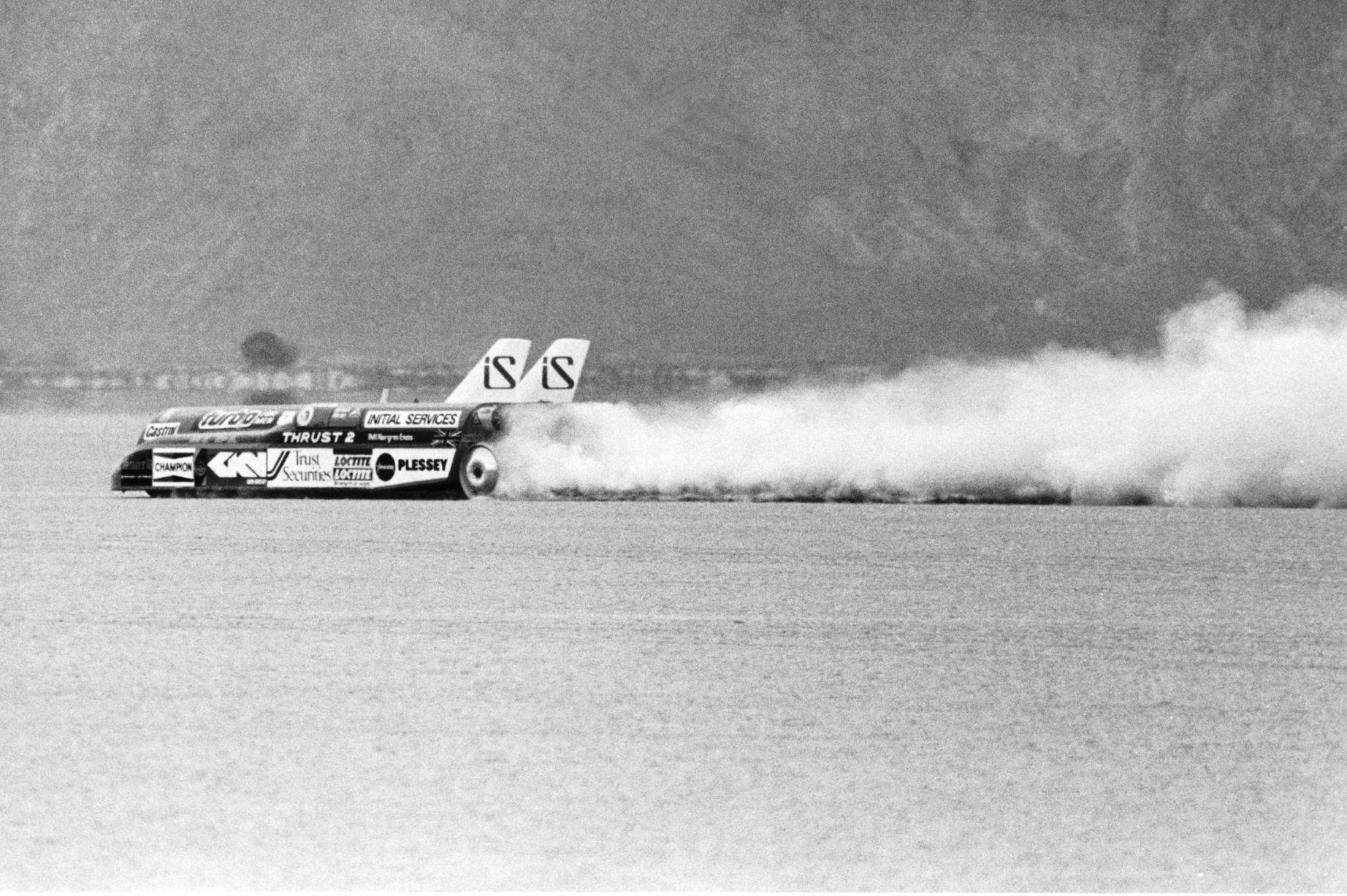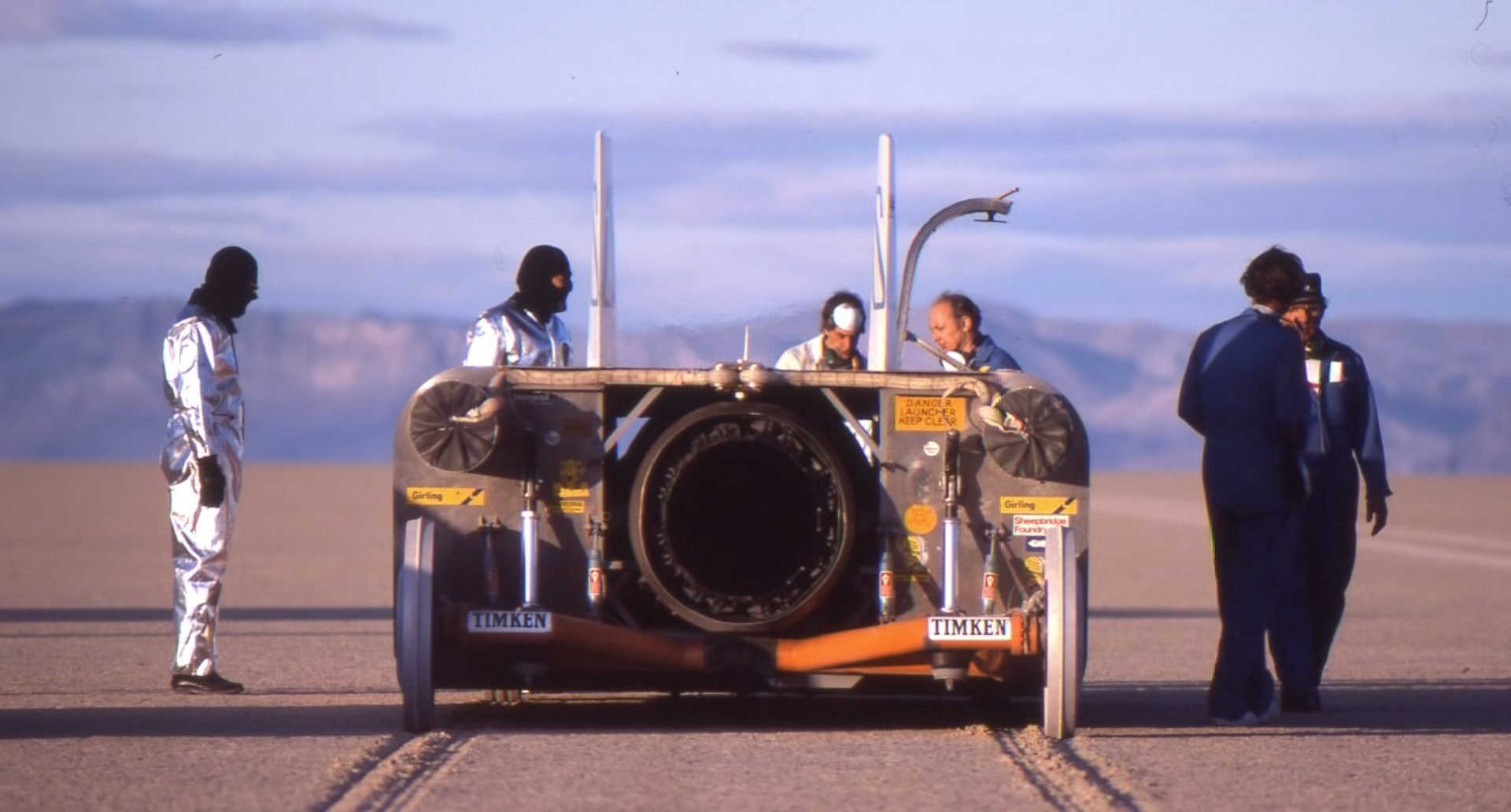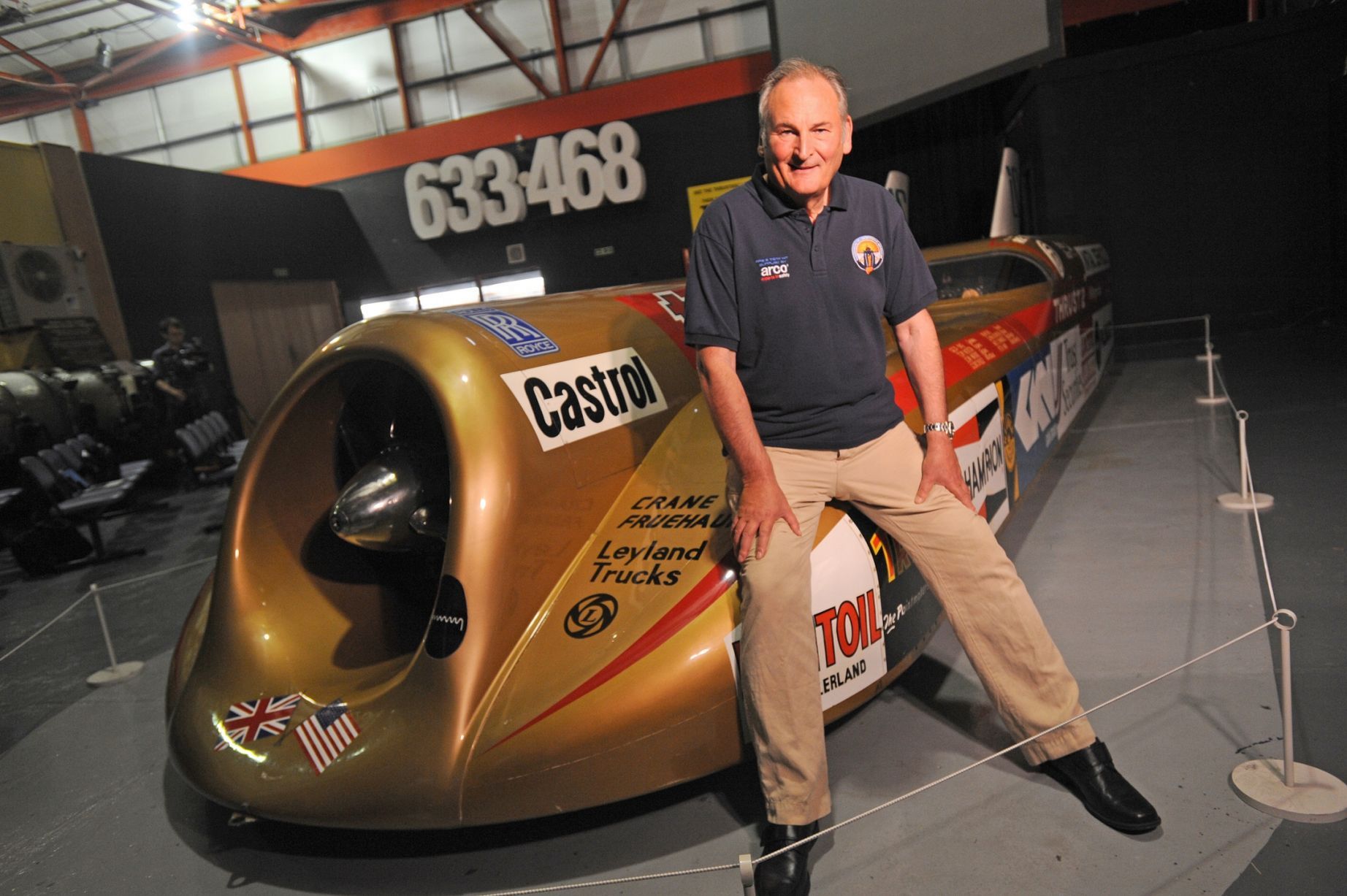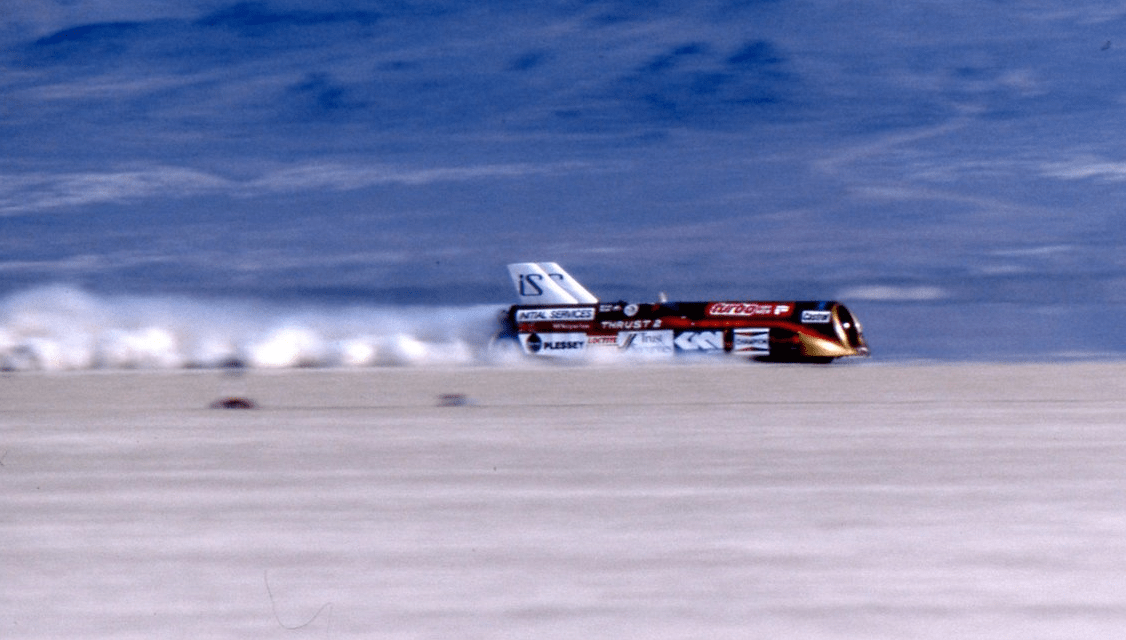Chasing land speed records has been something that has fascinated mankind for decades. In fact, it has gone on since the early 1900s and as the years have gone on, the records have gotten higher, and higher. Many have tried to become the fastest of all time, and many have failed, some making the ultimate sacrifice in the process. One man though, who has pushed the limits both inside the car, and outside the car is Britain’s Richard Noble, one of the fastest men on earth and a former land speed record holder.
Noble was instrumental in the development and founding of the Thrust SSC project, the car that is the current record holder. Piloted by Royal Air Force pilot Andy Green, it set a record of 760 mph in October 1997. Noble, along with Green, was one of the early leading lights of the Bloodhound project. Noble himself though was a world record holder, something that can often be forgotten. The car he drove to what was then the land speed record was Thurst2, still one of the fastest cars ever created and one that is thankfully still very much with us today.
The Previous Record Holder
Noble, his car designer John Ackroyd and his Thrust2 team had quite the task ahead of them. They wanted to take the record from American driver Gary Babelich, and his car Blue Flame, which had set the previous record of 622.407 mph in October 1970. Blue Flame was a missile shaped car, powered by a thrust liquid-propellant engine and was much simple in design than what Noble and his team were going to come up with.
Noble had initially planned to build three vehicles. These would be Thrust1, Thrust2 and Thrust3. Hence, why Thrust2 earned its name. Thrust1 was to be a test platform, Thrust2 a demonstration car and Thrust3 would be the actual record-breaking machine. Following a testing accident, which saw no one hurt thankfully, Thrust1 was sold for scrap and with financial issues hurting the project the decision was made to streamline the project. The team had initially only started with £175. Thurst3 would never exist, and thus Thrust2 was to become Nobles weapon of choice for the land speed record.
Thrust 2 Itself
Even today, Thrust2 has the air of one of the most sophisticated land speed record cars ever created. Early development was quite a struggle, thanks to the aforementioned financial problems. The car was built on the Isle of Wight, and Noble is quoted by Autocar as saying they had so little money at the time that they could not afford a phone. The car, without its body, was even able to set a British record in the process of averaging 248 mph on a course just 1.9 miles long. This was before the elegant body was attached to the car, with the gold paint and the two distinctive rear fins at the back of Thrust2.
Thrust2 is remarkably a two-seater, with a separate left side cabin being used to give sponsors rides at up to 200 mph. The car is powered by a Rolls-Royce Avon jet engine, the same that was used in the fearsome English Electric Lightning, one of the fastest fighter aircraft ever built and famed for its vertical climbs. The engine in Thrust2 is mounted in the middle of the car with a single exhaust at the rear and the cars total power output equates to roughly 30,000 hp.
Setting The Record
The Thrust2 team headed to the Nevada Black Rock Desert in 1983 to hopefully take the car to a new land speed record. This followed an abortive attempt at the holy grail of speed records, Bonneville, in 1982, where so many record-breaking cars have run. That was called off due to rain, and the car didn’t even make it off the trailer. The Black Rock desert, a huge mud flat, was perfect for Thrust2’s record-breaking efforts. With little testing, Noble effectively taught himself to drive the car, knowing they wouldn't have many shots at taking the record. It was world record, or bust.
Noble’s record-breaking run came on October 4th 1983. In the years since the record, he has described the handling as being all over the place initially from 0 to 300 mph, but it settles down a bit after that as the two tail fins start to take effect. The record run itself saw Thrust2 shatter Blue Flame, its fastest individual run being a staggering 650 mph and the overall record run that was officially recognized was 633.468 mph, taking the record away from Blue Flame by over 10 mph. In a remarkable twist, the team later discovered that if he had gone just 7 mph faster on his record run, Noble and his car would have taken off and crashed.
The Legacy Thrust2 And Noble Left
Thurst2’s remarkable record is still the third-fastest land speed record of all time, with Thrust SSC later setting two records of 713.990 mph and the fastest of 760.343 mph. From that small starting budget, and with a small team with almost no preparation compared to the SSC project, Noble and Thrust2 set the standard for land speed records for 15 years, and had he not set up the Thrust SSC project, Noble’s record may still be the fastest now.
Thurst2 and Richard Noble are often forgotten, especially with Bloodhounds loft ambitions, which hopefully come to fruition. But nearly 40 years on from that remarkable run, Noble and Thrust2 stand as a reminder as to what man can do, and what land speed records are all about. Thrust2 and her successor, Thrust SSC, now reside at the Coventry Transport Museum in the UK, with Bloodhound alongside as she waits for further investment.
Sources: 4Kolka, YouTube, Hemmings, Coventry Live, Wootton Bridge Historical

